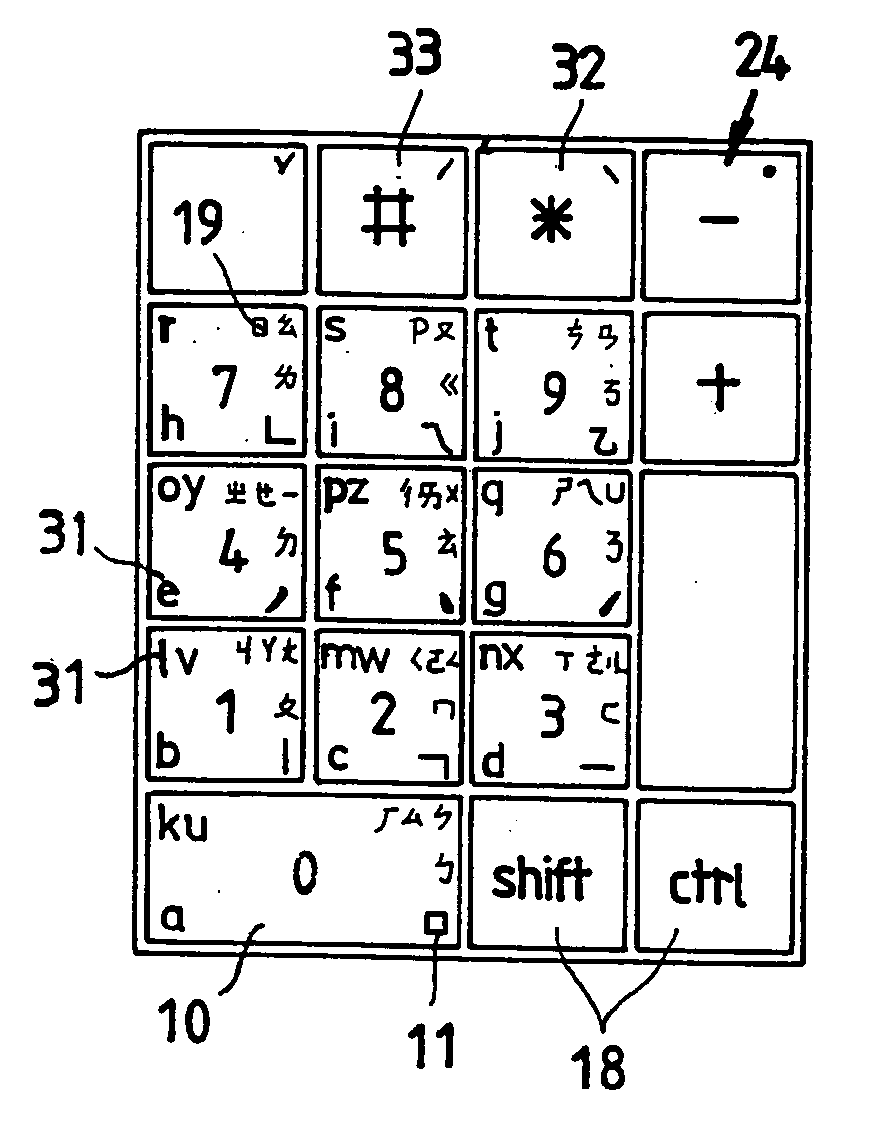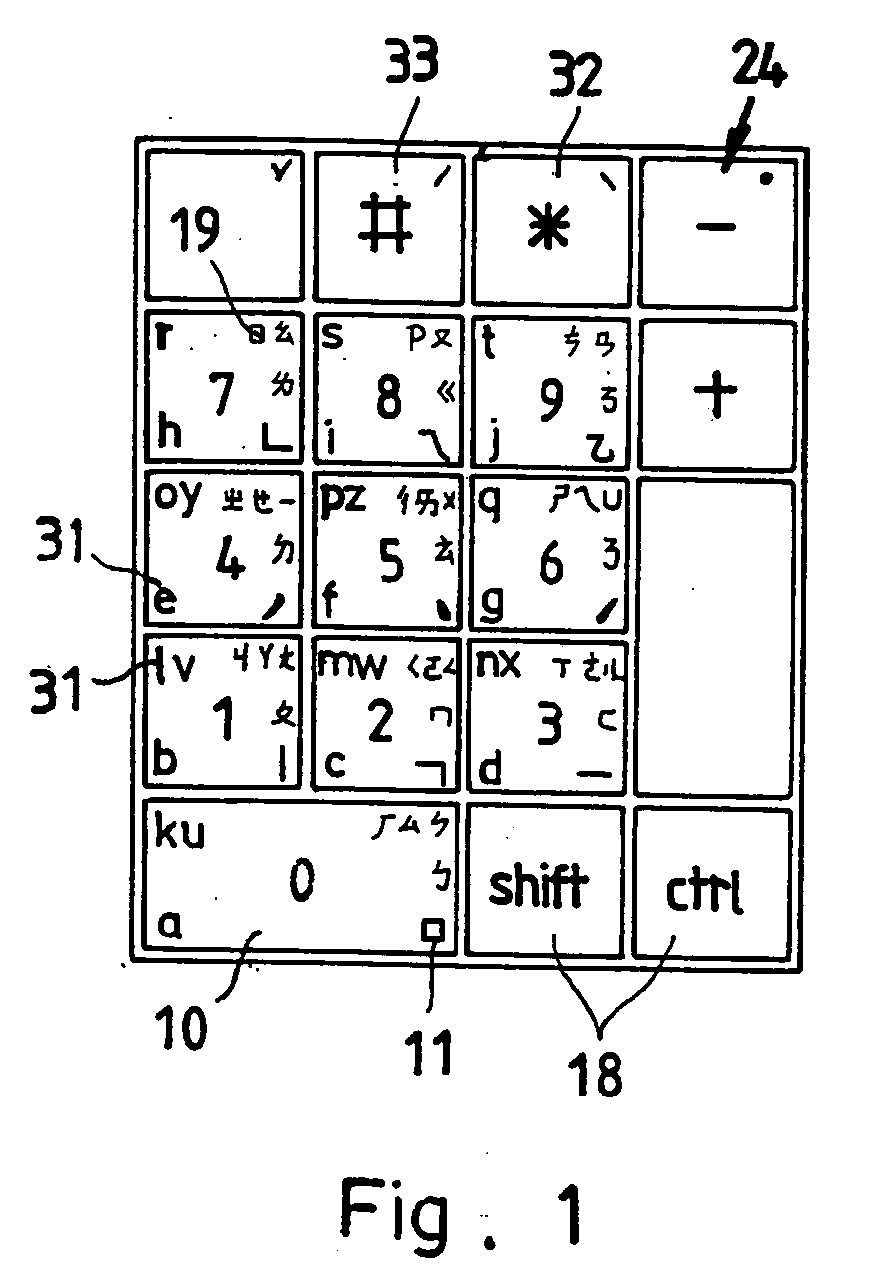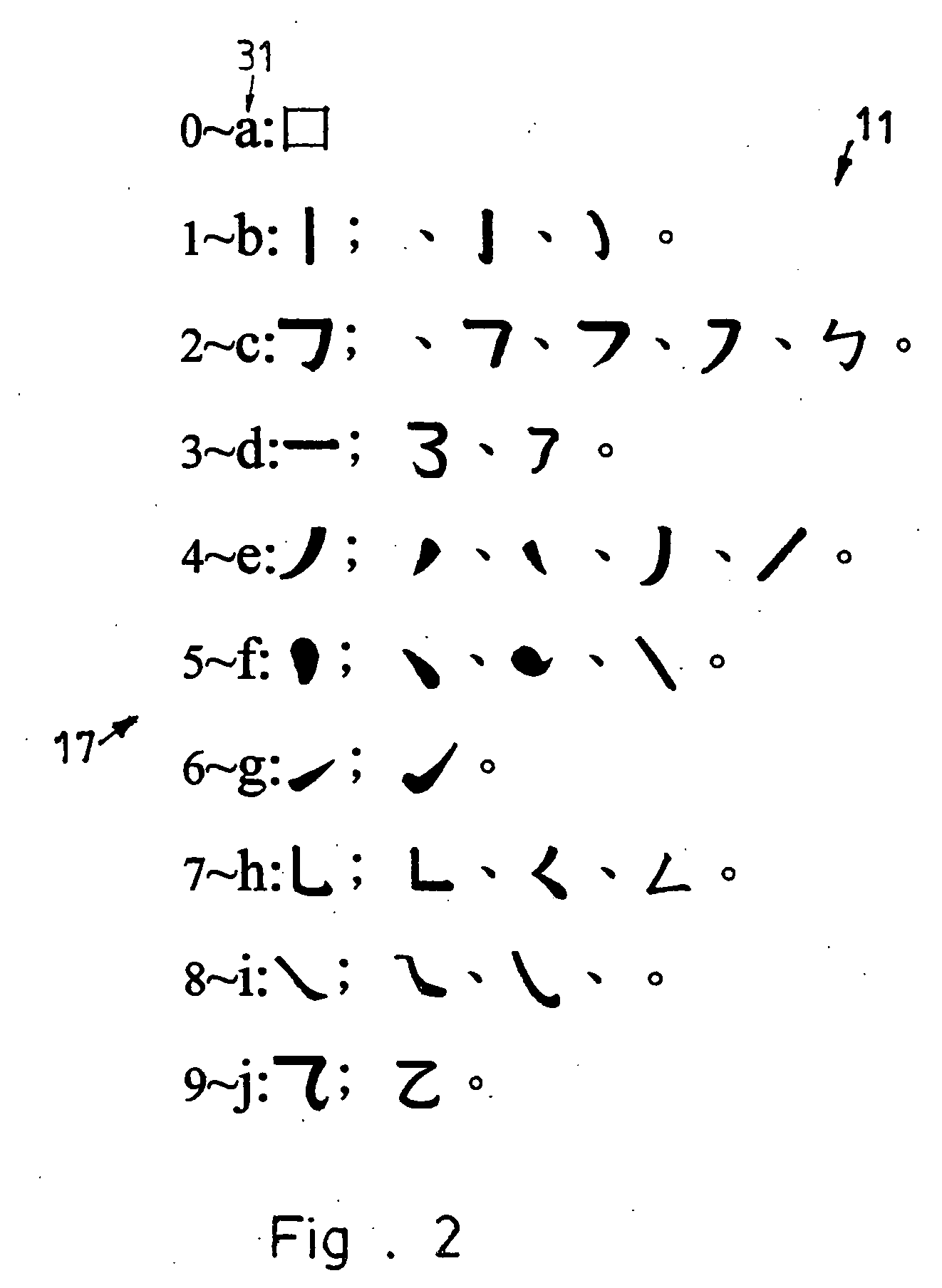Method for inputting Chinese characters, English alphabets, and Korean characters by using a numerical keyboard
a numerical keyboard and keyboard technology, applied in the field of numerical keyboards, can solve the problems of increasing the space required, difficult to learn, and trouble for users, and achieve the effect of preventing unnecessary repeating
- Summary
- Abstract
- Description
- Claims
- Application Information
AI Technical Summary
Benefits of technology
Problems solved by technology
Method used
Image
Examples
third embodiment
[0045] In the third embodiment, the first and last strokes of the words, the first phonetic symbol of the word are used. For example for the word the first stroke and last stroke and the first phonetic symbol are used. In this embodiment, the 37 phonetic symbols used in the Chinese characters must be distributed on the numerical keyboard. For example, referring to FIG. 1, the phonetic symbols are arranged in the key of 0, etc., as illustrated in FIG. 1.
fourth embodiment
[0046] In the fourth embodiment, as shown in FIGS. 7a and 7b, for the phonetic symbols in the same key, one predetermined phonetic symbol is inputted by only pressing the key, but the other phonetic symbols are inputted by pressing the key and a further key. For example, for the arranged in the key of 0, if only the key 0 is pressed, it represents that the phonetic symbol is inputted. If the key 0 and key 1 are pressed sequentially, it represents that the phonetic symbol is inputted. If the key 0 and key 2 are pressed sequentially, it represents that the phonetic symbol is inputted. If the key 0 and key 3 are pressed sequentially, it represents that the phonetic symbol is inputted.
[0047] In the fifth example, see FIG. 5a, in the key 5, there are four phonetic symbols are arranged therein, which are The is arranged independent. Thus if key 5 is pressed, it represents an input of the The is assigned with key 5 and key 2. The is assigned with key 5 and key 1. The is assigned...
PUM
 Login to View More
Login to View More Abstract
Description
Claims
Application Information
 Login to View More
Login to View More - R&D
- Intellectual Property
- Life Sciences
- Materials
- Tech Scout
- Unparalleled Data Quality
- Higher Quality Content
- 60% Fewer Hallucinations
Browse by: Latest US Patents, China's latest patents, Technical Efficacy Thesaurus, Application Domain, Technology Topic, Popular Technical Reports.
© 2025 PatSnap. All rights reserved.Legal|Privacy policy|Modern Slavery Act Transparency Statement|Sitemap|About US| Contact US: help@patsnap.com



